

Institute of Ecotourism
Debuts in Sedona, Ariz.
Lee N. Christensen and Associates creates
renovated, LEED™-standard headquarters
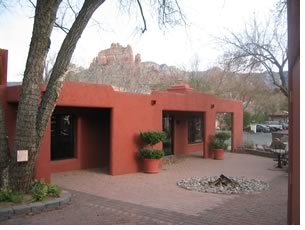 The
new, nonprofit Institute of EcoTourism (IET) is a small organization facing
a grand mission: “to help businesses, organizations, and individuals
live more rewarding lives through greater awareness of the harmony between
man and nature.” Likewise, its new headquarters, a transformed pair
of artist’s galleries in Sedona, Ariz., is a small gem of a facility
presenting a great heart and soul to local residents and visitors alike.
The
new, nonprofit Institute of EcoTourism (IET) is a small organization facing
a grand mission: “to help businesses, organizations, and individuals
live more rewarding lives through greater awareness of the harmony between
man and nature.” Likewise, its new headquarters, a transformed pair
of artist’s galleries in Sedona, Ariz., is a small gem of a facility
presenting a great heart and soul to local residents and visitors alike.
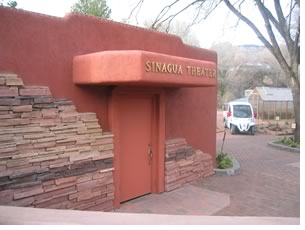 Designed
by local architect Lee Christensen and Associates, IET’s headquarters,
which will constitute Arizona’s first privately funded LEED (Leadership
in Energy and Environmental Design)-certified “green building,”
recently opened its doors to the public. The new facility will enable
the institute to further its specific goals to:
Designed
by local architect Lee Christensen and Associates, IET’s headquarters,
which will constitute Arizona’s first privately funded LEED (Leadership
in Energy and Environmental Design)-certified “green building,”
recently opened its doors to the public. The new facility will enable
the institute to further its specific goals to:
- Enhance the visitors’ experience of Sedona
- Provide a model of conservancy efforts for the hospitality industry
- Develop a network of constructive relationships within the community.
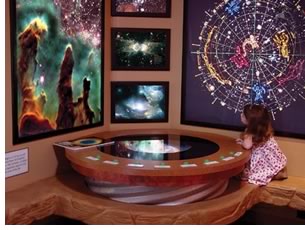 Located
at the gateway to Sedona’s renowned Tlaquepaque cultural district,
the new facility beautifully blends with Sedona’s distinctive red-rocks
landscape. The fortuitous location surely will attract the attention of
Sedona’s 3 million tourists annually, says Lee Christiansen, AIA,
who has lived and worked in the area for a quarter of a century. He has
designed a generous flow of space within and around the two buildings’
1,500 square feet that accommodate a wide range of indoor and outdoor
exhibits and activities—from an “Anasazi cave” projection
theater to a Zen cactus garden. The institute’s individual multimedia
stations, classrooms, and visitors’ center stations allow exploration
of the natural and cultural environment in many formats. Also in keeping
with the institute’s mission to unite the local community and share
Sedona’s beauty and rich heritage, the grounds adjacent to the buildings
will host an organic greenhouse, a “mock” archaeology excavation,
and a series of learning stations on local plant and animal communities.
Located
at the gateway to Sedona’s renowned Tlaquepaque cultural district,
the new facility beautifully blends with Sedona’s distinctive red-rocks
landscape. The fortuitous location surely will attract the attention of
Sedona’s 3 million tourists annually, says Lee Christiansen, AIA,
who has lived and worked in the area for a quarter of a century. He has
designed a generous flow of space within and around the two buildings’
1,500 square feet that accommodate a wide range of indoor and outdoor
exhibits and activities—from an “Anasazi cave” projection
theater to a Zen cactus garden. The institute’s individual multimedia
stations, classrooms, and visitors’ center stations allow exploration
of the natural and cultural environment in many formats. Also in keeping
with the institute’s mission to unite the local community and share
Sedona’s beauty and rich heritage, the grounds adjacent to the buildings
will host an organic greenhouse, a “mock” archaeology excavation,
and a series of learning stations on local plant and animal communities.
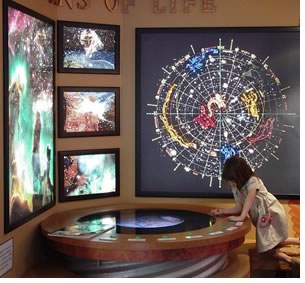 Using
the existing buildings gave the architects a leg up on creating a project
that in totality is sustainable and extremely energy-conscious. They did
add a thick screening wall on the west side of the stuccoed wood-frame
structure to help keep out the harsh afternoon sun. Recycling, though,
is the heart of this project’s energy-consciousness. The roof, for
example, which needed to be rebuilt, was constructed of salvaged glulam
beams. The architects also rewired the entire complex, in part to accommodate
an efficient mix of lighting that includes solar tubes to bring natural
light deep into the space. Even the old furnace will be refurbished and
used elsewhere in the Tlaquepaque complex, which itself has gotten into
the sustainability spirit, Christensen reports.
Using
the existing buildings gave the architects a leg up on creating a project
that in totality is sustainable and extremely energy-conscious. They did
add a thick screening wall on the west side of the stuccoed wood-frame
structure to help keep out the harsh afternoon sun. Recycling, though,
is the heart of this project’s energy-consciousness. The roof, for
example, which needed to be rebuilt, was constructed of salvaged glulam
beams. The architects also rewired the entire complex, in part to accommodate
an efficient mix of lighting that includes solar tubes to bring natural
light deep into the space. Even the old furnace will be refurbished and
used elsewhere in the Tlaquepaque complex, which itself has gotten into
the sustainability spirit, Christensen reports.
LEED-ing the way to sustainability
The project meets all the criteria for LEED certification, which is now
pending. The renovated buildings qualify mainly on the basis of extensive
use of recycled materials and resource-conserving systems incorporated
into the design, explains associate architect Ana Perez, who has diligently
tracked the elements and processes for certification.
 IET’s
LEED-certified design concentrates on conserving natural resources and
energy as well as maximizing use of recycled materials and includes:
IET’s
LEED-certified design concentrates on conserving natural resources and
energy as well as maximizing use of recycled materials and includes:
- Framing and drywall from Forest Stewardship Council certified wood and recycled materials
- Recycled-content carpeting
- Recycled-content rubber flooring in a special children’s section of the building
- Custom-designed recycled-content concrete, steel, and wood display counters
- Rapidly renewable material (wheatgrass board) and recycled polycarbonate (a clear plastic) in the modular office furniture
- Recycled and non-formaldehyde materials for roof insulation (with extra insulation to increase thermal value)
- Non-CFC and non-HCFC products in HVAC systems
- Recycled and non-formaldehyde content wood composite board in kitchen cabinets
- Compliance with LEED certification for non-toxic carpets, paints, sealers, and adhesives
- Automatically controlled and operated economizer (heat-pump), humidifier, and carbon-dioxide-detection systems for improved indoor air quality
- Operable windows in all employee-occupied spaces and daylight views in all spaces
- Using salvaged materials within the project and finding reuses for as many demolished materials as possible (e.g., salvaging the existing built-up roofing for use as protection for waterproofing in a retaining wall for another construction project)
- Limiting the amount of lighting fixtures and using compact fluorescent (CFL) bulbs in all applicable fixtures.
 On
the site, LEED-worthy considerations include:
On
the site, LEED-worthy considerations include:
- A timer-controlled drip system to conserve water for landscaping
- Tree plantings to maximize shade and reduce heat
- Indigenous plants
- An on-site recycling facility
- Compliance with Sedona’s strict “Night Sky” ordinance restricting use of outdoor lighting
- A battery-operated car that will transport visitors around the Tlaquepaque complex
- Erosion control throughout construction, as well as built into the permanent landscape design
- Dust-controlling recessed steel grates at main entries.
New age for ecotourism?
The project appears to have been a model for project cooperation. In addition
to getting residents on board with the concept, Christiansen says that
the architecture team worked very closely with Jonathan Duncan, the institute’s
executive director, and was able to fast-track the project to everyone’s
satisfaction. Christensen and Perez both remarked on the unusual resourcefulness
of their general contractor, Eric Nelson of Triton Builders, who helped
find salvaged materials for use in the project. The group worked with
Northern Arizona University’s School of Hotel and Restaurant Management
to create a practical model that can be applied by resorts and other organizations.
The institute also is working with the university and a variety of other
groups—including the U.S. Forest Service and local conservation
groups—to ensure that its educational programming is meaningful
to residents and visitors alike. Finally, Christensen says, the group
worked together to capture the entire construction sequence on video and
hopes to share the process with others in the field who seek to achieve
LEED status.
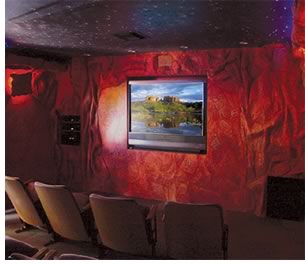 Sedona
is exquisitely beautiful and its denizens environmentally savvy, making
the town a perfect poster child for ecotourism. But will the concept play
in, say, Peoria or even Las Vegas—places much needier for its concepts?
IET representatives say emphatically, yes, the idea has universal appeal.
Key to IET’s ecotourism model, according to Duncan, is its practical
approach. “Although virtually everyone can agree that the principles
of ecotourism are worth adopting, it has always been much more difficult
to find ways of implementing them,” he says.
Sedona
is exquisitely beautiful and its denizens environmentally savvy, making
the town a perfect poster child for ecotourism. But will the concept play
in, say, Peoria or even Las Vegas—places much needier for its concepts?
IET representatives say emphatically, yes, the idea has universal appeal.
Key to IET’s ecotourism model, according to Duncan, is its practical
approach. “Although virtually everyone can agree that the principles
of ecotourism are worth adopting, it has always been much more difficult
to find ways of implementing them,” he says.
The Sedona pilot project may prove the concept’s viability. “Tourism has the potential to be a powerful economic generator. Worldwide, it represents the largest industry; nationally, it is the first, second, or third largest industry in every state,” concludes Duncan. “The power of ecotourism is that it enables communities to harness that potential and thrive economically while preserving their resources and natural and cultural heritage at the same time. If handled properly, ecotourism is a win-win situation for everyone involved.”
Copyright 2004 The American Institute of Architects. All rights reserved. Home Page ![]()
![]()
 |
||
| For more
information, contact the Institute of EcoTourism at 91 Portal Lane,
Sedona, AZ 86336, or visit their Web site. The U.S. Green Buildings Council’s LEED standard is a voluntary, consensus-based program for developing high-performance sustainable buildings.
|
||